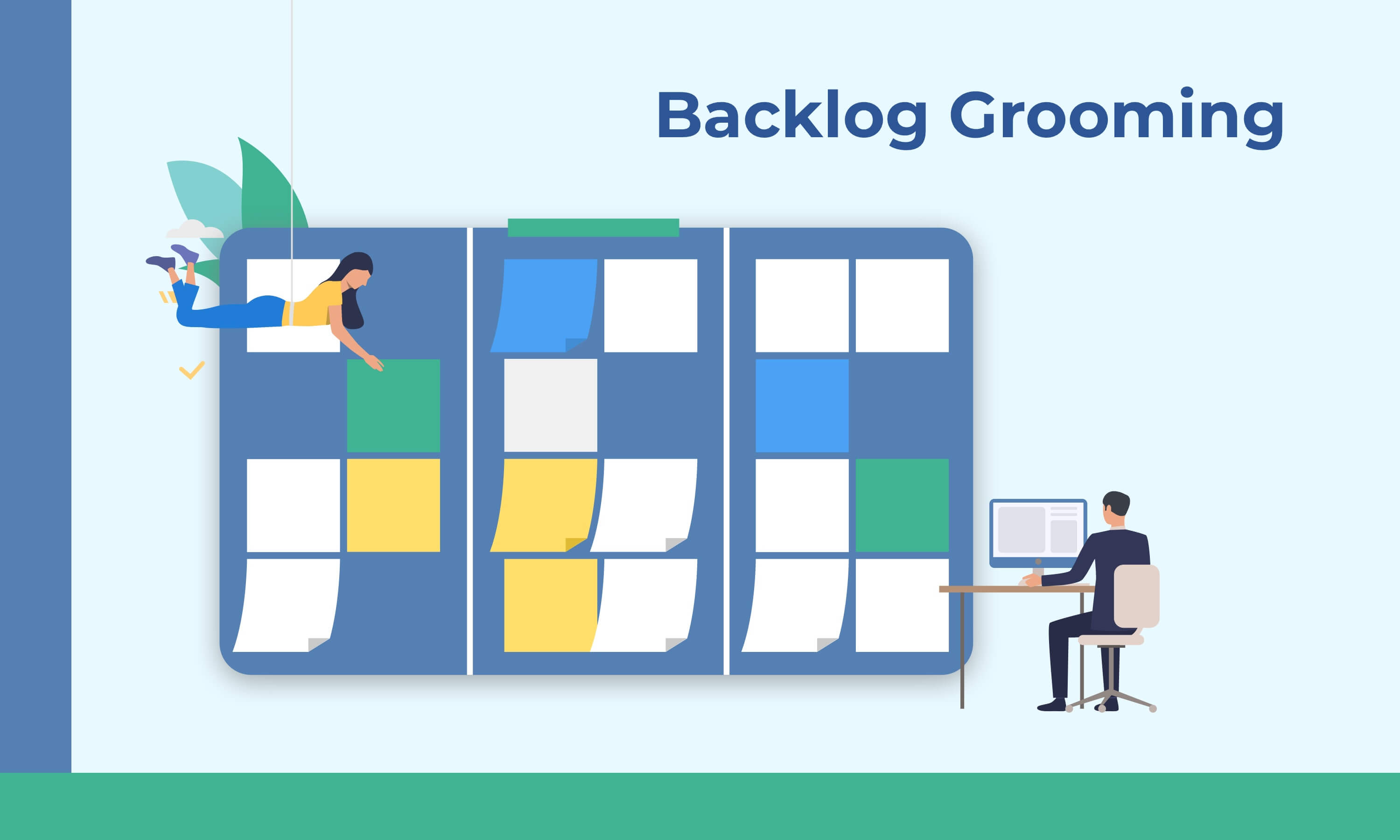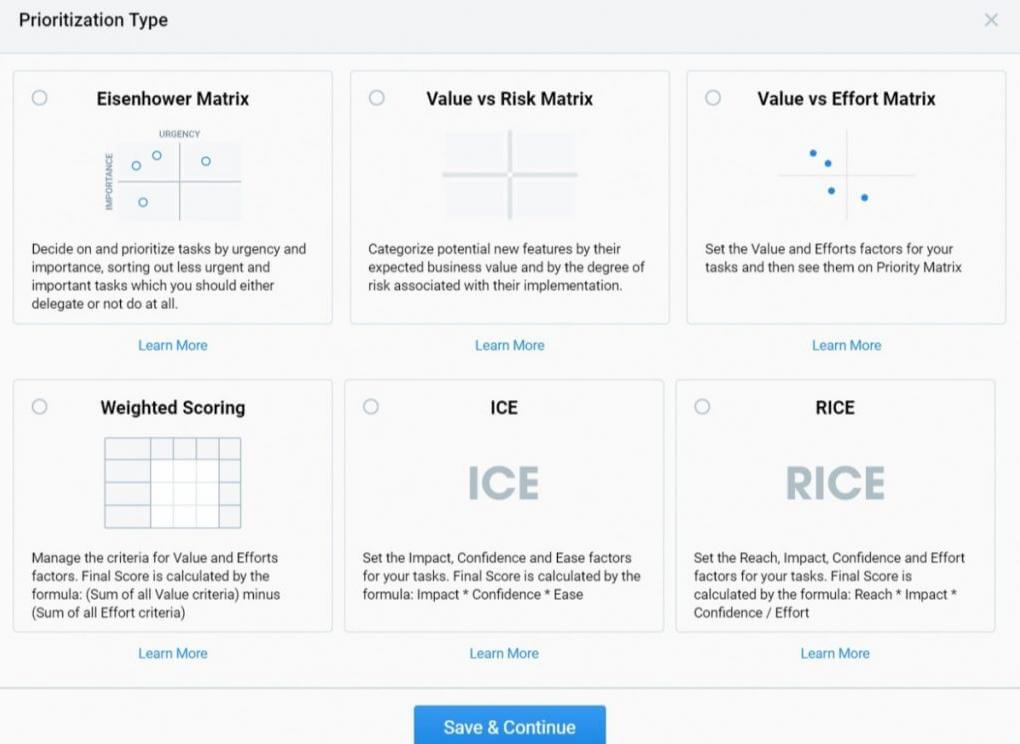The Agile methodology consists of various mandatory concepts and artifacts. A product backlog is one of them. This is actually a set of requirements received from the business and formulated in the form of development tasks.
Backlog grooming is not a magic wand; it's a comprehensive activity aimed to ensure that all the tasks are always in clear order. How can the grooming process be improved? And what are the special things about it?

The tasks in the backlog have no value if they do not bring any system or structure optimization. It’s crucial for product managers to work with the product backlog properly to get relevant tasks. Product backlog grooming is the process that streams to help do it correctly.
The parallel with caring about one’s appearance really fits here as any product also requires attention to be high-demanded.
Backlog grooming is a team meeting in Scrum that highlights the discussion of the backlog details and the next Sprint planning. Another name of the meeting is Product Refinement (or sometimes — Storytime session).
At first sight, it may seem that the most experienced product managers and product owners know how to turn routine backlog management into a successful process. However, in order to achieve this, they must be able to carefully care and «cherish» their product backlog, know how to clean and optimize it. All these actions compose a product backlog refinement.
Let's be honest — any product, like a human, requires attention and care.
A product backlog is the list of user stories that are not in the current sprint. It defines the remainder of the project’s scope. The separate items in this list can quickly become the reason for overwhelming. It often leads to panic concerning what should be done when the product backlog grows rapidly.
Team members can lose focus on important tasks and user stories’ status may become unclear, the challenges with time and resources estimating may appear.
The backlog refinement aims to conduct a productive meeting between a product owner/product manager and a customer’s representative. The main goal is to break the backlog down into user stories and reprioritize them. It's better to arrange the grooming regularly. The process should be based on deep analysis and clear acts.
The well-conducted grooming makes sure that the tasks presented in the backlog are relevant and those that are presented at the top of the list are ready for planning in a sprint, implementation, and release.
Backlog grooming is often called a pre-planning process. Usually, the product owner and team representatives organize it in the middle of a Sprint. It is not considered as a formal part of Scrum. However, it is recommended to allocate up to 15% of each Sprint for this activity.
Here’re some opinions drawn from Quora about how much time should team spend supporting the backlog grooming activity:
The key goal of product backlog grooming is to discuss the current items list and identify clear suggestions for its improvement.
To improve the backlog, the meeting participants may act the following:
Actually, the grooming process ensures that the requirements will be clarified and user stories will be prepared for work in advance. While planning the future interactions, all the participants will have a well-defined set of stories, split into the independent components and clearly prioritized.
Since defining priorities is a key part of the grooming activity, it is rather important to correctly visualize the relationship of tasks for further working with them.
Professional prioritization is a crucial thing. Fortunately, product owners can easily use modern prioritization frameworks that can be found in the functionality of some product management software (Hygger, ProductPlan, Airfocus, etc.)
For example, Hygger.io proposes to prioritize your backlog, remove not relevant user stories, increase or decrease the priority of separate tasks, add and revise new features, and much more. You may choose one of the available prioritization models from the simple one (Value vs Effort matrix) to the more complex solutions (ICE scoring model or RICE prioritization framework).

You backlog looks healthy after the refinement process when:

Sometimes the grooming activity is confused with Sprint planning.
To sum it up, we can easily define the key advantages of product backlog grooming:
Do not save time on grooming and remember that product backlog refinement should become a constant activity. This process will ensure the qualitative development of your product.
The key moment is to optimize tasks in the backlog for subsequent work with them. Grooming the backlog, you clarify the relevance of tasks, review existing challenges and get additional info about tasks that are still unclear.
Backlog grooming is not a magic wand; it's a comprehensive activity aimed to ensure that all the tasks are always in clear order. How can the grooming process be improved? And what are the special things about it?

The tasks in the backlog have no value if they do not bring any system or structure optimization. It’s crucial for product managers to work with the product backlog properly to get relevant tasks. Product backlog grooming is the process that streams to help do it correctly.
The parallel with caring about one’s appearance really fits here as any product also requires attention to be high-demanded.
One more type of Scrum meeting
Backlog grooming is a team meeting in Scrum that highlights the discussion of the backlog details and the next Sprint planning. Another name of the meeting is Product Refinement (or sometimes — Storytime session).
At first sight, it may seem that the most experienced product managers and product owners know how to turn routine backlog management into a successful process. However, in order to achieve this, they must be able to carefully care and «cherish» their product backlog, know how to clean and optimize it. All these actions compose a product backlog refinement.
Let's be honest — any product, like a human, requires attention and care.
Strategic sense of grooming in product management: how to increase its value
A product backlog is the list of user stories that are not in the current sprint. It defines the remainder of the project’s scope. The separate items in this list can quickly become the reason for overwhelming. It often leads to panic concerning what should be done when the product backlog grows rapidly.
Team members can lose focus on important tasks and user stories’ status may become unclear, the challenges with time and resources estimating may appear.
The backlog refinement aims to conduct a productive meeting between a product owner/product manager and a customer’s representative. The main goal is to break the backlog down into user stories and reprioritize them. It's better to arrange the grooming regularly. The process should be based on deep analysis and clear acts.
The well-conducted grooming makes sure that the tasks presented in the backlog are relevant and those that are presented at the top of the list are ready for planning in a sprint, implementation, and release.
Backlog grooming is often called a pre-planning process. Usually, the product owner and team representatives organize it in the middle of a Sprint. It is not considered as a formal part of Scrum. However, it is recommended to allocate up to 15% of each Sprint for this activity.
Here’re some opinions drawn from Quora about how much time should team spend supporting the backlog grooming activity:
«The time spent in backlog refinement is a function of the maturity of the team (technology-wise as well as embracing Agile), size & complexity of the product, organizational structure, lifecycle state of the product, and environment surrounding the team. In general, a team can start with two to four hours a week and let it settle down».
Tushar Jain, Agile coach, trainer, and speaker
«It depends on your team, your stories, and how much „grooming“ you want to do. Typically, I've managed grooming in with Sprint Planning, as a „before“ or „after“ task where we discussed new stories or upcoming stories that might have questions or issues that would need to be resolved before they can be acted on. We aim for 15-30 minute Sprint Planning sessions, so it's usually easy to use the leftover half-hour or so to go through other upcoming stories».
Cliff Gilley, Product Management professional
«Sometimes 1–2 hours per Sprint are enough, sometimes it takes much more than that. If you see the warning signs, put more effort into grooming! Remember that stories should be talked through and estimated during grooming, NOT during Sprint planning (although occasional re-estimation is fine). It is the Product Owners duty to keep the backlog current, relevant and aligned with the business goals – the grooming is there to help them. The grooming also helps the team to shorten planning sessions and spread the business knowledge necessary to implement features».
Matthias Orgler, Agile Coach, Business Innovator
The goals of backlog grooming
The key goal of product backlog grooming is to discuss the current items list and identify clear suggestions for its improvement.
To improve the backlog, the meeting participants may act the following:
- Add new user stories
- Re-assess priorities
- Break some user stories down into smaller ones
- Remove the user stories that are not already relevant
- Add and estimate new features, prioritize them
- Refine the previously written user stories
- Review time and personnel estimates for individual issues
- Redefine testing criteria
- Correct estimates in accordance with newly defined data, and some more essential acts.
Actually, the grooming process ensures that the requirements will be clarified and user stories will be prepared for work in advance. While planning the future interactions, all the participants will have a well-defined set of stories, split into the independent components and clearly prioritized.
What tools help to groom?
Since defining priorities is a key part of the grooming activity, it is rather important to correctly visualize the relationship of tasks for further working with them.
Professional prioritization is a crucial thing. Fortunately, product owners can easily use modern prioritization frameworks that can be found in the functionality of some product management software (Hygger, ProductPlan, Airfocus, etc.)
For example, Hygger.io proposes to prioritize your backlog, remove not relevant user stories, increase or decrease the priority of separate tasks, add and revise new features, and much more. You may choose one of the available prioritization models from the simple one (Value vs Effort matrix) to the more complex solutions (ICE scoring model or RICE prioritization framework).

What is the result of the well-arranged backlog grooming?
You backlog looks healthy after the refinement process when:
- User stories look clear to all team members
- The number of tasks at the top of the backlog is enough for 2-3 Sprints
- User stories are rated by team
- The stories have a normal size to implement several of them in one Sprint

Backlog grooming is not Sprint planning!
Sometimes the grooming activity is confused with Sprint planning.
- Product grooming means keeping the backlog up to date and getting backlog items ready for upcoming Sprints.
- The core idea of Sprint planning is agreeing on the goal for the current Sprint and Sprint backlog. It’s not only about communicating requirements but about learning, defining options and making decisions together.
Conclusion
To sum it up, we can easily define the key advantages of product backlog grooming:
- Leads to effective sprint planning
- Removes uncertainty of user stories
- Increases product efficiency
- Assists to avoid rework in development and testing
- Saves time for the development team for further discussion during the Sprint cycle because they give clarity about the requirements
- Identifies dependencies within the team
- Helps to foresee risks
- Provides product owners and managers with more chances to enhance the requirements with more information if it’s required.
Do not save time on grooming and remember that product backlog refinement should become a constant activity. This process will ensure the qualitative development of your product.
The key moment is to optimize tasks in the backlog for subsequent work with them. Grooming the backlog, you clarify the relevance of tasks, review existing challenges and get additional info about tasks that are still unclear.